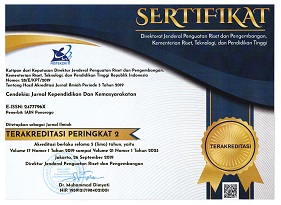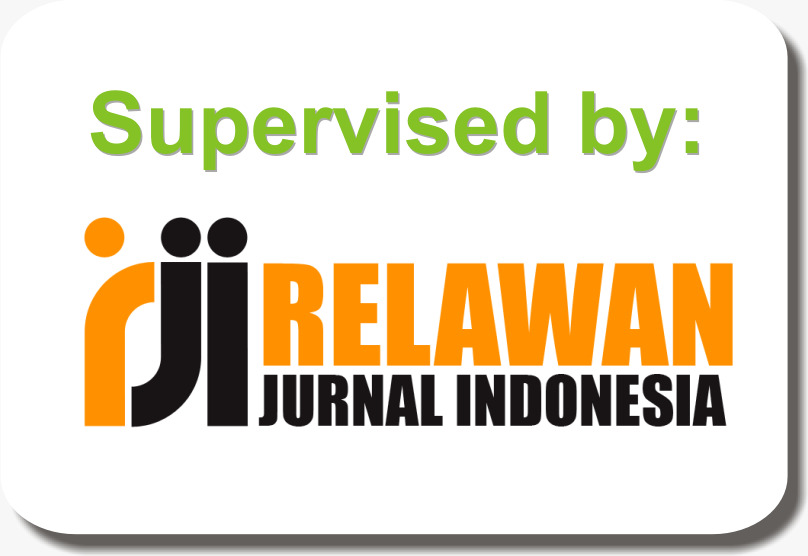Using Multi-Grade Teaching in Strengthening Students' Character Post-FTF Learning
DOI:
https://doi.org/10.21154/cendekia.v20i2.4586Keywords:
multi-grade, teaching, character valuesAbstract
This research aims to learn multigrade teaching techniques to strengthen students' character values. Research methods include descriptive research through a qualitative approach. Researchers collect data through interviews, observation, and documentation. Qualitative data analysis is the collection, simplification, presentation of data, and conclusion. The results of this study describe that multi-grade teaching is closely related to strengthening the character values of post-face-to-face learning students. The process includes combining several grade levels with a maximum number of 25 students and then being given material by one teacher who emphasizes the learning process for students. The technique provides opportunities for students to improve the character values they have obtained. This technique encourages students to grow in learning effectively and efficiently and strengthens the character of students after the last 2 years, and students rarely meet with teachers. Some of the values obtained through multi-grade teaching: are independence, ethics, and cohesiveness.
References
Aji, Rizqon Halal Syah. “Dampak Covid-19 pada Penelitian di Indonesia: Sekolah, Keterampilan, dan Proses Pembelajaran.” Jurnal Social Budaya Syar’i 7 (2020): 395”“402.
Alwiyah, Sayyida. “Penerapan E-Learning untuk Meningkatkan Inovasi Creativepreneur Mahasiswa.” ABDI JURNAL: ADI Bisnis Digital Interdisiplin Jurnal 1 (2020): 35”“40.
Anggrawan, Anthony. “Analisis Deskriptif Hasil Belajar Pembelajaran Tatap Muka Dan Pembelajaran Daring Menurut Gaya Belajar Mahasiswa.” Jurnal Matrik: Jurnal Manajemen, Teknik Informatika & Rekayasa Komputer 18 (2019): 339”“346.
Astuti, Marsini. “Multigrade Dimasa Pandemi.” Jurnal PEDAGOGY : Jurnal Ilmiah Ilmu Pendidikan 8 (2021): 34”“37.
Berry, Chris. “Multigrade Teaching: A Discussion Document,” 2004.
Dianto. “Character Building In New Normal Islamic Education.” Proceeding International Seminar On Islamic Studies 2 (2021): 264”“269.
Dyah Ayu Megawaty, Damayanti, Zakaria Sani Assubhi, Maulana Aziz Assuja. “Aplikasi Permainan Sebagai Media Pembelajaran Peta dan Budaya Sumatera untuk Siswa Sekolah Dasar.” Jurnal Komputasi 9 (2021): 58”“66.
Eeva Kaisa Hyry-Beihammer, Tina Hascher. “Multi-Grade Teaching Practices in Austrian and Finnish Primary Schools.” International Journal of Educational Research 75 (2015): 104”“113.
Faizatun Nissa, Akhmad Haryanto. “Implementasi Pembelajaran Tatap Muka Di Masa Pandemi Covid-19.” Jurnal IKA PGSD (Ikatan Alumni PGSD) UNARS 8 (2020): 402. https://doi.org/10.36841/pgsdunars.v8i2.840.
Hamima, Yendri. “Penggunaan Metode Modeling The Way Dalam Pembelajaran Kosa Kata Bahasa Inggris Untuk Meningkatkan Hasil Belajar Kelas VIII-3 SMP Negeri 2 Tembilahan Tahun Pelajaran 2019/2020.” Jurnal Pendidikan Tambusai 6 (2022): 9531”“9543.
Hendikawati. “Multigrade Teaching: Upaya Mengatasi Masalah Pendistribusian Guru yang tidak Merata di Indonesia.” Jurnal LIK : Lembaran Ilmu Kependidikan 37 (2008): 55”“61.
Iba, La. “Konsep Pendidikan Akhlak Dalam Al-Qur’an (Kajian Tafsir Surat Luqman Ayat 12-19).” Al-Iltizam: Jurnal Pendidikan Agama Islam 2 (2017): 138”“155.
Imam Tabroni, Dean Dwi Putra, Najah Adawiah, Rosmiati. “Forming Character With Morals Prophet Muhammad SAW.” EAJMR: East Asian Journal of Multidisciplinary Research 1 (2022): 41”“48.
Jehudin. “Penerapan Pembelajaran Kelas Rangkap Di SD Negeri 012 Tanjung Palas Menggunakan Metode Ceramah Materi Pendidikan Agama Islam Tahun Pelajaran 2016/2017.” JIME: Jurnal Ilmiah Mandala Education 2 (2016): 26”“34.
Lin, J., Pol, S. J., Korczak, D. J., Coelho, S., Segovia, A., Matava, C. T., Parekh, R. S., Science, M., Caldeira-Kulbakas, M., Crosbie, J., Carroll, S., Greenwood, J. L., Panzera, G., Imgrund, R., Back to School COVID-19 Study Group, & Anthony, S. J. “Impact of COVID-19 Public Health Protocols on Teachers Instructing Children and Adolescents During an In-Person Simulation.” Journal of the Canadian Academy of Child and Adolescent Psychiatry = Journal de l’Academie canadienne de psychiatrie de l’enfant et de l’adolescent 31 (2022): 52”“63.
Little, Angela. Multi-Grade Teaching: A Review of Research and Practice. Education Research, Department for International Development. London, 1995.
Michaerl Simonson, Susan Zvacek, Sharon Smaldino. Teaching and Learning at a Distance; Foundations of Distance Education. USA: IAP-Information Age Publishing, 2019.
Nevly Wisano Powa, Witarsa Tambunan, Mesta Limbong. “Analisis Persetujuan Orang Tua Terhadap Rencana Pembelajaran Tatap Muka Terbatas di SMK Santa Maria Jakarta.” Jurnal Manajemen Pendidikan 10 (2021): 100”“111. http://ejournal.uki.ac.id/index.php/jmp/article/view/3274.
Octia Hasviani, Tutut Handayani, Izza Fitri. “Strategi Guru Paud Dalam Meningkatkan Kemampuan Bersosialisasi Peserta Didik Di TK Negeri Pulau Beringin.” JIIP : Jurnal Ilmiah Ilmu Pendidikan 5 (2022): 1458”“1466.
Risbon Sianturi, Nuruzahra Luthfillah, Heti Zakiyyah, Heti Zakiyyah. “Status Profesi Guru Bimbingan Dan Konseling Di Sekolah.” Journal of Education Research 3 (2022): 42”“47.
Roziana Baharin, Rizqon Halal Syah Aji, Ishak Yussof, Nasir Mohd Saukani. “Impact Of Human Resource Investment On Labor Productivity In Indonesia.” Iranian Journal Of Management Studies 13 (2020): 139”“164.
Safuri Musa, Sri Nurhayati, Reny Jabar, Deddy Sulaimawan, Mohammad Fauziddin. “Upaya Dan Tantangan Kepala Sekolah PAUD Dalam Mengembangkan Lembaga Dan Memotivasi Guru Untuk Mengikuti Program Sekolah Penggerak,.” Jurnal Obsesi: Jurnal Pendidikan Anak Usia Dini 6 (2022): 4239”“4254.
Siahaan, Sudirman. “Pembelajaran Ragam Kelas/Tingkatan (Multigrade Teaching)DI Sekolah Dasar (SD): Konsep Dan Penerapannya.” Jurnal Teknodik 4 (2018): 043”“067. https://doi.org/10.32550/teknodik.v4i15.382.
Sugeng Purwantoro, Memen Akbar, Ardianto Wibowo. “Penguatan Metode Pengajaran Kepada Guru-Guru SMA/SMK Sederajat Se-Kota Pekanbaru Dalam Rangka Mitigasi Bencana Pandemi Covid-19 Sejahtera.” JUARA : Jurnal Wahana Abdimas 2 (2021): 161”“177.
Sumarni, Abduh H.Harun, Imran. “Penerapan Metode Diskusi Untuk Meningkatkan Hasil Belajar Siswa Kelas IV Sekolah Dasar Kecil Toraranga Pada Mata Pelajaran PKn Pokok Bahasan Sistem Pemerintahan Kabupaten Kota Dan Provinsi,.” Jurnal Kreatif Tadulako Online 3 (2015): 13”“22.
Syaukani Nasution, Mesiono. “Model Pendidikan Akhlak Di MTs Al-Wasliyah 63 Punggulan Air Joman Kabupaten Asahan.” EDU RILGIA: Jurnal Ilmu Pendidikan Islam Dan Keagamaan 1 (2017): 74”“89.
Taole, M.J. “Identifying the Professional Knowledge Base for Multi-Grade Teaching.” Journal Gender and Behaviour 15 (2017): 4.
Velasco, Rustom A, Ramos, Allan O, Azarias, Ranec A. “BADANGAM: An Indigenized Multi-Grade Teaching Model.” International Journal of Research Studies in Education 11 (2022): 27”“42.
Waspada. “Pengaruh Model Pembelajaran Discovery Learning Terhadap Hasil Belajar Pendidikan Kewarganegaraan Pada Kelas XI Madrasahaliyah (MA) Al Nahdlah Islamic Boarding School Bojongsari Depok Jawa Barat.” JTA: Jurnal Tunas Aswaja 1 (2022): 9”“18.
Wawancara dengan Ahmad Hidayat. “Siswa” (13/02/2022).
Wawancara dengan Bapak Luthfi, S.Pd.I “Kepala Sekolah” (09/02/2022).
Wawancara dengan Ibu Julaeha, S.Pd. “Guru” (09/02/2022).
Zein, Muh. “Peran Guru Dalam Pengembangan Pembelajaran.” Jurnal Inspiratif Pendidikan 5 (2016): 274”“285.
Downloads
Published
Issue
Section
License
Copyright & License
Please find the rights and licenses in Cendekia: Jurnal Kependidikan dan Kemasyarakatan. By submitting the article/manuscript, the author(s) agree with this policy. No specific document sign-off is required.
1. License
The non-commercial use of the article will be governed by the Creative Commons Attribution license as currently displayed on the Creative Commons Attribution-NonCommercial 4.0 International License.
2. Author(s)' Warranties
The author warrants that the article is original, written by the stated author(s), has not been published before, contains no unlawful statements, does not infringe the rights of others, is subject to copyright that is vested exclusively in the author and free of any third party rights, and that any necessary written permissions to quote from other sources have been obtained by the author(s).
3. User/Public Rights
The spirit of Cendekia: Jurnal Kependidikan dan Kemasyarakatan is to disseminate articles published as free as possible. Under the Creative Commons license, Cendekia: Jurnal Kependidikan dan Kemasyarakatan permits users to copy, distribute, display, and perform the work for non-commercial purposes. Users will also need to attribute authors and Cendekia: Jurnal Kependidikan dan Kemasyarakatan on distributing works in the journal and other media of publications. Unless otherwise stated, the authors are public entities as soon as their articles got published.
4. Rights of Authors
Authors retain all their rights to the published works, such as (but not limited to) the following rights;
- Copyright and other proprietary rights relating to the article, such as patent rights,
- The right to use the substance of the article in own future works, including lectures and books,
- The right to reproduce the article for own purposes,
- The right to self-archive the article,
- The right to enter into separate, additional contractual arrangements for the non-exclusive distribution of the article's published version (e.g., post it to an institutional repository or publish it in a book), with an acknowledgment of its initial publication in this journal (Cendekia: Jurnal Kependidikan dan Kemasyarakatan).
5. Co-Authorship
If the article was jointly prepared by more than one author, any author submitting the manuscript warrants that he/she has been authorized by all co-authors to be agreed on this copyright and license notice (agreement) on their behalf and agrees to inform his/her co-authors of the terms of this policy. Cendekia: Jurnal Kependidikan dan Kemasyarakatan will not be held liable for anything arising due to the author(s) internal dispute. Cendekia: Jurnal Kependidikan dan Kemasyarakatan will only communicate with the corresponding author.
6. Royalties
Being an open accessed journal and disseminating articles for free under the Creative Commons license term mentioned, the author(s) are aware that Cendekia: Jurnal Kependidikan dan Kemasyarakatan entitles the author(s) to no royalties or other fees.
7. Miscellaneous
Cendekia: Jurnal Kependidikan dan Kemasyarakatan will publish the article (or have it published) in the journal if the article's editorial process is completed. The editors of Cendekia: Jurnal Kependidikan dan Kemasyarakatan may modify the paper to a style of punctuation, spelling, capitalization, referencing, and usage that deems appropriate. The author acknowledges that the article may be published so that it will be publicly accessible, and such access will be free of charge for the readers, as mentioned in point 3.

















